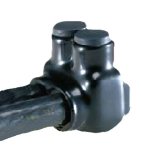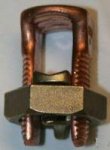Is there a standard for connecting motors to the line feeding them? For example a 480 volt
20 HP three phase motor. The feed from source is #4's so L1-L2 and L3 are nutted and bolted
to T1-T2and T3.
What about the other leads that get spliced together ( # 10's ) for instance, are these to be nut and bolt
or will wire nuts be ok in the nose bag? Wire nuts have a voltage rating but I don't see any amperage rating.
Motor manufacturer info does not address this as far as I can see.
20 HP three phase motor. The feed from source is #4's so L1-L2 and L3 are nutted and bolted
to T1-T2and T3.
What about the other leads that get spliced together ( # 10's ) for instance, are these to be nut and bolt
or will wire nuts be ok in the nose bag? Wire nuts have a voltage rating but I don't see any amperage rating.
Motor manufacturer info does not address this as far as I can see.



